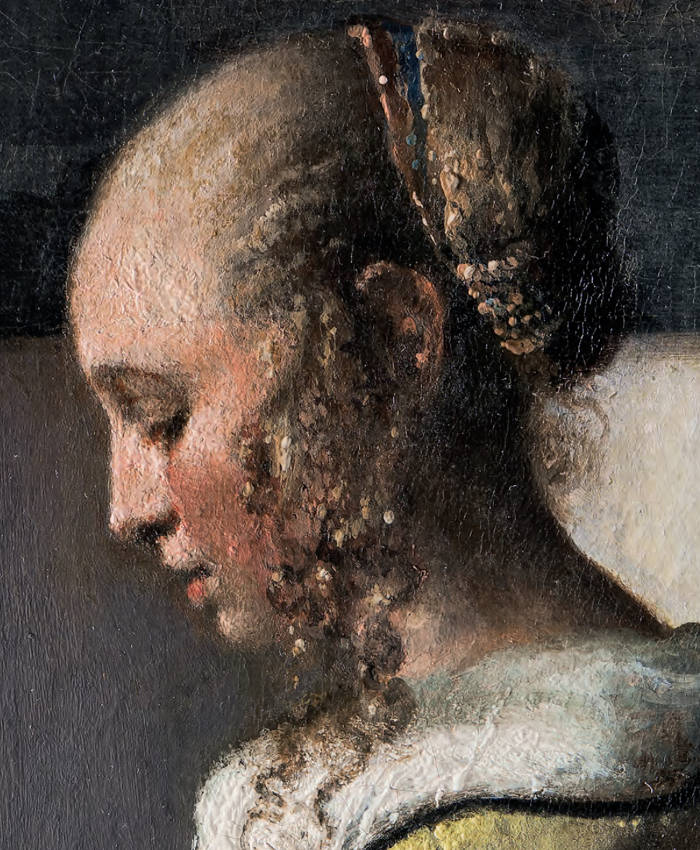Impasto

Johannes Vermeer
c. 1657–1659
Oil on canvas, 83 x 64.5 cm.
Gemäldegalerie Alte Meister, Dresden
The Italian word impasto can be translated as "pasty mixture."The word impasto is Italian in origin; in which it means "dough" or "mixture;" related to the verb impastare, "to knead," or "to paste." Italian usage of impasto includes both a painting and a potting technique. The root noun of impasto is pasta, meaning "paste." In regards to painting technique, the term refers to a thick, opaque layer of paint that is immediately evident to the observer's eye. Impasto was often used to represent the important areas of the painting since it tends to attracts the eye more than the surrounding areas of smoother paint. The light which falls on the irregularities created by the brush stroke produces a sparkling effect that reinforces the material reality of the object represented.When impasto is used selectively, the contrast between the thick texture and the smoother areas can create a play of contrast that increases the textural variety the overall dynamism of the composition Moreover, the strokes used to apply impasto can suggest movement, lending a energetic quality to the artwork that flat paint does not.
The glitter of the impasto passages was even greater in Vermeer's times since the texture and fluidity of hand-made paint could be made ad hoc to match the painter's usage—paint was generally much leaner than paint sold in tubes today. A great deal impasto of relief in the Old Masters' works has been destroyed by heavy pressing with hot irons used during the relining of degraded canvas supports.
An excellent example of impasto use in Vermeer's oeuvre can be observed in the girl's head and jacket of Girl Reading a Letter at an Open Window. The build-up of thick paint accentuates the effect of reflected light as well as the physical presence of the figure's high forehead. The illuminated parts of her yellow bodice were also executed with abundant impasto made of a mixture of thick white lead and lead-tin yellow, the most brilliant yellow pigment available in the seventeenth century.
Although the young girl in this painting is very small in relation to her surroundings (especially when compared to Vermeer's later single-figure compositions), she nonetheless captures the viewer's attention not only due to her to her elegant posture and lovely profile, but to the skillful use impasto.
